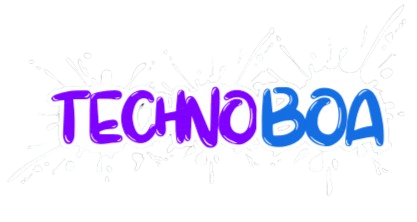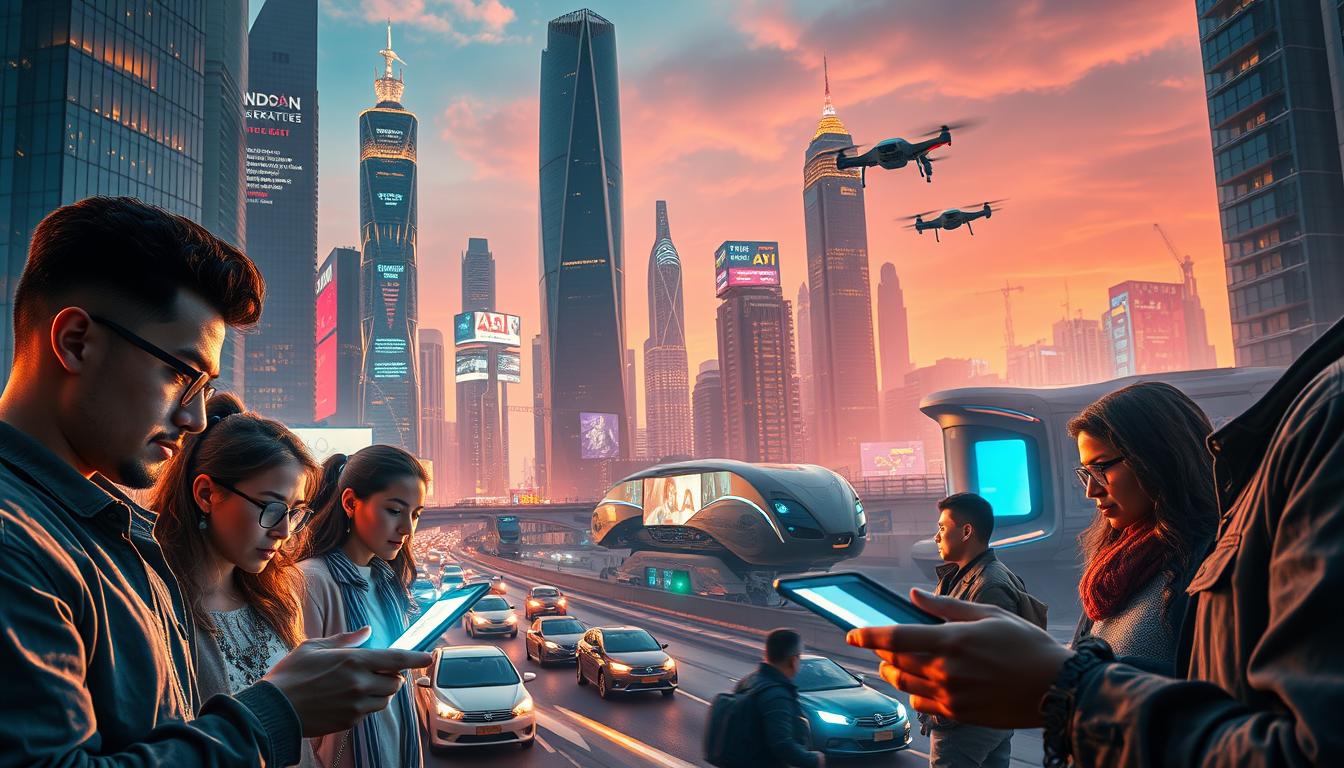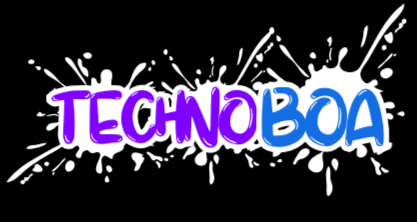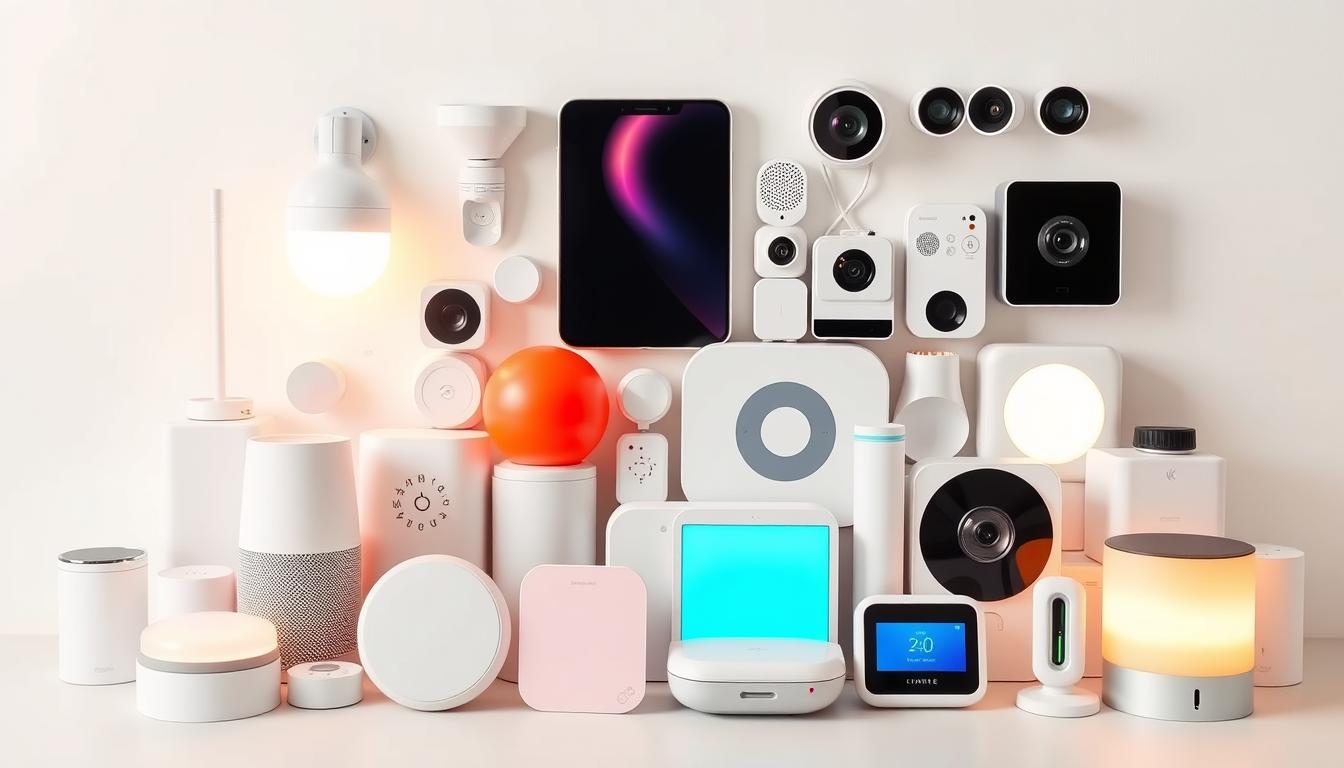As we enter 2025, the world of online business is changing fast. AI side hustles are now a big deal. They help people make more money and work smarter. Think about using tech to start a business that makes money. You can do this while you follow your dreams. It’s possible with the right tools and plans. Getting into AI side hustles can really change your life. It’s a smart way to make extra money and stay on top in the job market. Key Takeaways Discover the potential of AI side hustles in 2025 Learn how to boost productivity with emerging tech Explore new opportunities for financial stability Understand the role of entrepreneurship in the digital age Unlock the secrets to creating a successful online business The AI Revolution: Creating Unprecedented Income Opportunities The AI revolution is changing how we work and make money. As we enter 2025, it’s clear that AI is more than just tech. It’s a key to new ways to earn. How AI is Transforming the Gig Economy in 2025 The gig economy is changing fast thanks to AI. AI technologies are automating routine tasks. This lets gig workers do more creative and problem-solving work. It boosts productivity and opens up new ways to earn. New platforms are using AI to find jobs for workers. For example, AI can match freelancers with jobs that fit their skills. This saves time and can increase earnings. The Financial Impact of AI on Freelancing and Remote Work AI’s impact on freelancing and remote work is big. It automates some tasks, which might replace jobs. But it also creates new jobs and boosts earnings for many. Freelancers who learn AI find new chances in areas like AI training data and consulting. Learning AI is key to earning well in a tough market. Why Now is the Perfect Time to Enter the AI Market 2025 is a great time to get into the AI market. AI is growing fast and being used in many fields. As more businesses use AI, the need for AI skills grows. This need offers many chances to learn AI skills and make good money. You can freelance, consult, or create AI products. The earning potential is big. Best AI Sidehustle in 2025: Top 5 High-Demand Opportunities The AI industry is set for a big change in 2025. This change brings great side hustle chances for those ready. AI is spreading into many areas, making skills in AI very valuable. AI Content Creation and Optimization AI content creation and optimization is a top side hustle. It uses AI tools to make great content that people like. Specialized Writing for AI Applications Writing for AI needs a deep knowledge of writing and AI. AI applications need content that grabs people’s attention and works well with AI. Prompt Engineering and Refinement Prompt engineering is key in AI content creation. It’s about making precise prompts for AI to give the right answers. AI-Powered Marketing Consulting AI marketing consulting is very sought after. It helps businesses use AI to improve their marketing. This includes predictive analytics and making customer experiences personal. AI Tool Development and Customization AI tool development and customization are also in demand. Businesses want to automate and understand data better. They need AI solutions made just for them. AI Training Data Specialist AI training data specialists are vital. They make sure AI models learn from good, relevant data. This includes data collection, annotation, and validation. AI Content Reviewer and Moderator AI content reviewers and moderators are needed more. They check if AI content meets standards and rules. AI Side Hustle Description Demand Level AI Content Creation Generating high-quality content using AI tools High AI-Powered Marketing Consulting Helping businesses leverage AI for marketing High AI Tool Development Developing and customizing AI tools for businesses High AI Training Data Specialist Preparing high-quality data for AI model training High AI Content Reviewer Reviewing and moderating AI-generated content High These AI side hustles offer many chances to make money. By learning the right skills and keeping up with trends, you can start a profitable AI business. Emerging AI Niches with Six-Figure Potential The AI revolution is creating new chances for big money. New areas are opening up for businesses and people to make a lot of money. AI technology is getting better, leading to new ways to use it. AI for Small Business Automation and Efficiency AI is great for small businesses. It helps them work better, save money, and be more productive. AI-powered chatbots can talk to customers, and predictive analytics help make smart choices. AI-Enhanced Personal and Professional Coaching AI is changing coaching too. AI coaching platforms give personal advice and help. They use machine learning algorithms to give advice based on your data. Industry-Specific AI Solutions That Command Premium Rates AI solutions for specific industries are very promising. These solutions are made just for certain fields. They cost more because they are so specialized. Healthcare AI Applications In healthcare, AI helps a lot. It improves patient care, makes work easier, and helps patients more. AI-powered diagnostic tools can look at medical images to help doctors. Financial Services AI Integration AI is also good for finance. It helps with risk, fraud, and planning. AI-driven trading platforms use lots of data to make smart investment choices. Sustainability and Climate Tech AI AI is key for the environment too. It helps cut down on waste and energy use. It also supports green farming. These new AI areas offer big money and help industries grow. Entrepreneurs and businesses can make a lot of money and help the world at the same time. Essential Skills That Will Define Success in the AI Economy Success in the AI economy needs the right mix of technical and non-technical skills. As AI changes industries, those who update their skills will do best. Technical Skills Worth Investing Time to Develop To do well in the AI economy, focus on technical skills that are wanted. Key technical skills
The best AI tools for Entrepreneure: My experience using them.
In today’s very fast-moving business world, AI has become so relevant for entrepreneurs to enhance productivity, efficiency, and decision-making processes. No matter whether you are at the initial stage or scaling up, AI tools will offer unparalleled advantages through automation, prediction, and offering deep insights on trends. In this article, I will tell my story in using the AI technology as an entrepreneur, followed by reviewing – which is mostly based on research and internet data – the most used AI tools. Some of them might not be an issue, but some are very reliable. AI for Content Creation My Experience:As an entrepreneur, content is king. From blogs to social media posts to building out email campaigns, it always seems like a need for good, quality content is present. Though the want for great content never ends, high-quality content created by yourself takes so much time to make. This is where AI tools have been a total game-changer for me. My Top Tools: 1. Jasper AI (formerly Jarvis) Overview: Jasper AI is an AI assistant that writes human-like content. Its use is suggested for writing blog posts, social media updates, product descriptions, and much more.Features:1. Generate Blog Post in Minutes2. Templates of more than 50 for various writing purposes3. Grammar Check4. Tone Check5. Integration with SEO tools like Surfer SEOMy Thoughts: Jasper helped me create several blog posts in no time, this saved me like about 50% of my writing time. I also loved their tone adjustment feature, which allowed me to tailor my content to targeted audiences.Online Reviews: People commend Jasper for its user-friendliness and rapid pace at which it can create content. Other users said the content is impressive but sometimes needs editing in order to bring out accuracy or flow. 2. Copy.ai Overview: Copy.ai automates the copywriting process, including social media posts and emails, all the way to long-form articles.Features:1. AI-generated marketing copy2. Niche-specific content3. Variety of tone optionsMy Thoughts: I found Copy.ai helpful in making quick social media posts and ideas for email campaigns. Its simplicity and the variety of templates that it offers make it a good choice for entrepreneurs who want fast yet effective copy.Online Reviews: The general feedback portrays Copy.ai as user-friendly and effective to use with regards to social media and email copy. However, complex, long-form content fared a little poorer with this tool. AI for Market Research and Data Analytics My Experience:Of the toughest ones has been the collection, analysis, and making sense of market data. I have always missed some insights hidden within giant datasets, given that doing it by hand is time-consuming. This all changed when I began integrating AI-driven tools into the process. Top Tools: 1. Crayon Overview: Crayon is an AI-based platform for competitive intelligence through which millions of sources of data are analyzed in order to discover trends, product updates, and strategies launched in the market.Features:1. Competitor tracking2. Market insights and analyses3. Easy-to-read reportsMy Thoughts: Crayon has become my go-to for competitive analysis. It helped me stay ahead of my competitors by showing me their strategies, market shifts, and emerging trends. In this way, decision-making will be more data-driven and proactive.Online Reviews: Users praise Crayon for his capability to deliver real-time competitive insights but add that sometimes it may be too much to handle with the tons of data it will gather. 2. MonkeyLearn Overview: MonkeyLearn is a text analysis tool powered by AI to perform sentiment analysis, keyword extraction, and classification tasks.Feature1. Sentiment analysis2. Text classifiers customizable3. Integrate with other apps such as Google SheetsMy Thoughts: I have used MonkeyLearn for insights from customer feedback. The insights of its sentiment analysis feature proved really helpful in adjusting my marketing strategies according to the customers’ satisfaction level.Online Reviews: Great user-friendly interface, and the AI analytics power is huge. Users like its flexibility and how easy it is to integrate it with other tools. AI for Sales and CRM Automation My Experience:Due to growth in business, manually managing leads, customer data, and processes of sales started becoming time-consuming. That’s where I began to use AI-driven Customer Relationship Management (CRM) and automation tools in sales. Top Tools: 1. HubSpot CRM (With AI-powered Sales Tools) Overview: HubSpot CRM is a leading AI-powered sales automation platform helping businesses engage in customer relationship management and sales pipeline management.Features:1. AI-powered lead scoring2. Automated email follow-up3. Sales forecastingMy Thoughts: How HubSpot CRM simplified lead management for me, the AI-powered lead scoring helped me prioritize the most promising leads, and I loved the fact that email automation would allow nurturing with minimal or no manual intervention.Customer Reviews: HubSpot CRM is incredibly useful to small and medium-scale organizations. Automation within the tool has saved a good amount of time for entrepreneurs, but some do report a learning curve in its feature set. 2. Salesforce Einstein Overview: Salesforce Einstein embeds AI into Salesforce CRM, adding advanced analytics, customer insights, and predictive recommendations.Features:1. Predictive sales forecasting2. Lead grading and automated follow-ups3. AI-powered customer insightsMy thoughts: Salesforce Einstein felt like having a sales assistant. Its predictive capabilities helped improve my sales strategies while making sure, through its lead-scoring system, that my sales team focuses on the most valuable leads.Online Reviews: Salesforce Einstein is known for its powerful AI; however, many note it is best fit for larger enterprises due to complexity and cost. Social media is one of the most important channels for marketing. However, keeping track of posts, engagement, and analytics over time can take quite a lot of work. AI-driven social media tools have saved me a lot of time by streamlining and automating most of this process. My Favourite Tools: 1. Hootsuite with AI Integrations OverviewHootsuite is the platform from where you have scheduled social media posts and used AI-driven content recommendations, analytics, and performance tracking.Features1. AI-powered recommendations2. Social media scheduling and automation3. AnalyticsMy Thoughts: Hootsuite made managing my social media a lot easier. I especially liked the AI content suggestions upon creating the posts, and it had a feature where I could schedule
Black Forest Labs [FLUX.1] – Is it better than Midjourney?
Black Forest Labs, the team responsible for creating the revolutionary Stable Diffusion model, recently launched Flux – an avant-garde collection of AI models aimed at transcending the limits of machine-generated images. But does Flux have any significant implications for art in general, and how does it hold up against larger players in this field like Midjourney? In this article, we will examine whether Flux has anything on Midjourney by analyzing its characteristics, functions, and future implications in terms of AI-generated art. Beginnings of Black Forest Labs To appreciate the technical merits of Flux, it is important to first understand the engine behind this innovation. Black Forest Labs is not just an ordinary AI startup. They were responsible for initial advancements in generative AI, and their team consists of members who contributed to VQGAN, Latent Diffusion, and the Stable Diffusion family. Their recent Series Seed fundraising of $31 million, facilitated by Andreessen Horowitz, has further strengthened their position at the apex of artificial intelligence research. Black Forest Labs endeavors to develop cutting-edge generative models that transform media production, with a particular emphasis on images and videos. The Flux Model Family The new generation of digital images from text is elevated by the FLUX.1 collection, introduced by Black Forest Labs. It emphasizes picture quality, compliance with prompt directions, variation in style, and complexity. The following are the three principal variants of the Flux model family: FLUX.1 [pro]: The most advanced model among its peers, boasting unparalleled performance characterized by exceptional visual quality, adherence to prompted commands, and diversity of outputs. It is also accessible through an API for professionals and corporate entities. FLUX.1 [dev]: A guidance-distilled model made publicly available without attached weights. It maintains the same standard of visual detailing but operates much more efficiently. FLUX.1 [schnell]: The fastest among them all, best suited for local development or private assignments. The program is under an Apache 2.0 license, allowing free access to everyone interested. To illustrate FLUX.1’s capabilities, here are some creative prompt examples: 1.”An AI wearing a racing helmet , speeding down a highway on a skateboard, leaving a trail of glitter. Open source: FLUX.1 [PRO] 2.“A dinosaur riding a tiny bicycle through a busy city street, wearing a top hat and monocle.”[Dev] Open source: FLUX.1 [DEV] 3. “A cute cat holding a sign that says hello Technoboa fans” Open source: FLUX.1 [schnell] Technical Performance of Flux Source: Black forest labs official website Several technical innovations underpin Flux’s remarkable performance, distinct from earlier iterations: Models Based on Flow Dynamics Powered by Transformers: Flux models rely on a mixed architecture that includes both multimodal and parallel diffusion transformer blocks, scaled up to a whopping 12 billion parameters each – setting a new benchmark in terms of model dimensions and intricacy. Flow Matching: This novel approach provides increased model flexibility and efficiency through a single infrastructure for generative modeling. Using Rotary Positioning and Parallel Attention Layers: These methods enhance the model’s spatial relationships, producing more coherent images. Scaling Up to 12 Billion Parameters: This vastness allows the generation of more complex patterns, leading to refinements in image quality and variety. Benchmarking Flux: A New Standard in Image Synthesis Source: Black forest labs official website Black Forest Labs contends that FLUX.1 comprehensively eclipses widely-used models, including Midjourney v6.0, DALL•E 3 (HD), and SD3-Ultra, in several aspects: A Comprehensive Comparison of Flux and Midjourney Let’s evaluate their comparison across several perspectives: Practical Applications of Flux Flux’s flexibility allows it to be applied in various contexts: The Future of Flux and AI-generated Art According to the roadmap provided by Black Forest Labs, an exciting future lies ahead for Flux: Final Thoughts: Is Flux superior than Midjourney? Comparing Flux and Midjourney depends on your specific needs. Flux offers more sophisticated infrastructure, better prompt adherence, and flexibility as an open-source model. However, Midjourney remains a favorite among many for its ease of use and proven track record. Ultimately, the choice between the two often comes down to personal preference and the distinct advantages each system offers.






